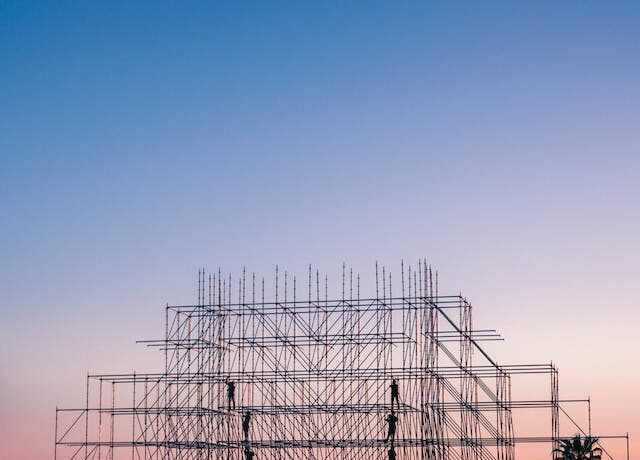The installation of structural steel plays a crucial role in the creation of buildings, bridges, and various structures. These steel frames provide essential structural support, ensuring the integrity and stability of the final edifice. In this blog post, we will discuss the significance of the installation of structural steel in the construction industry.
Why Structural Steel?
Structural steel installation is favoured in construction for several compelling reasons:
Strength and Durability
Structural steel is renowned for its strength and durability. Whether it’s supporting the soaring heights of skyscrapers, spanning the wide expanses of bridges, or withstanding the test of time in industrial facilities, structural steel’s innate robustness is the reason why engineers prefer it for their projects. It can also withstand heavy loads and adverse weather conditions, making it an ideal choice for large structures.

Versatility
Steel can be shaped and customized to fit virtually any architectural design, making it a versatile choice for various construction projects. With a broad range of shapes and sizes, steel components can be tailored to the specific needs of a project, enabling architects to breathe life into their most creative ideas.
Speed and Efficiency
Structural steel components can be fabricated offsite and then rapidly assembled onsite, saving time and labour costs. By employing advanced manufacturing techniques, steel components are fabricated offsite with precision, minimizing the risk of errors and ensuring a high level of quality control.
This approach significantly accelerates the construction timeline, allowing projects to be completed in a fraction of the time it would take using traditional building materials.
Sustainability
Steel is a recyclable material and using it in construction can contribute to a more sustainable and eco-friendly building process. By opting for steel, builders actively participate in the recycling loop as steel is one of the most recycled materials on the planet.
Additionally, the durability and longevity of steel structures mean that they require less frequent replacement or renovation, further minimizing the environmental footprint associated with construction and demolition waste.
Safety
Safety is a paramount concern in construction, and structural steel’s characteristics align perfectly with this imperative. The reduction in site welding, which is often required for alternative construction materials, significantly diminishes the hazards associated with open flames, fumes, and the potential for welding-related accidents.

With steel’s offsite fabrication and precision engineering, many of the high-risk activities traditionally conducted in the field can be replaced with safer and more controlled assembly processes.
Fire Resistance
The natural fire resistance of steel is a vital advantage that can’t be overstated, particularly in buildings where fire safety is paramount. Unlike some other construction materials that can weaken or fail under the intense heat of a fire, steel retains its structural integrity even in high-temperature conditions.
This crucial feature provides occupants with a safer environment and offers additional time for emergency response measures in the event of a fire.
Conclusion
Structural steel is the backbone of many impressive structures, enabling architects, engineers, and builders to create magnificent edifices that stand the test of time. Its importance in modern construction cannot be overstated, given its strength, durability, efficiency, and sustainability.





